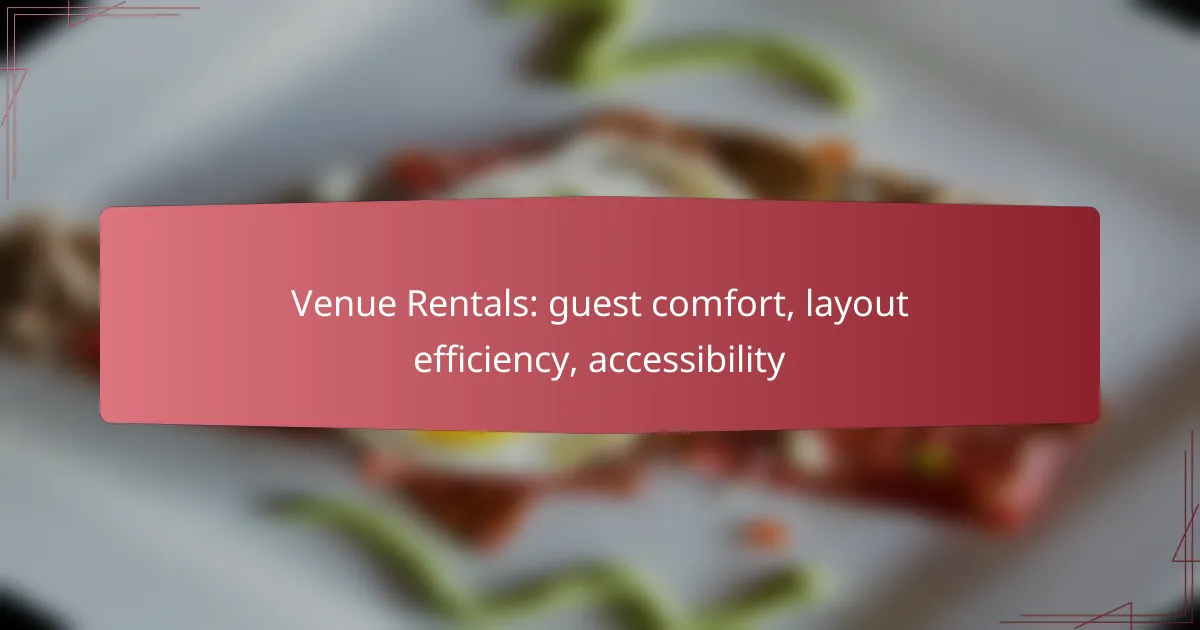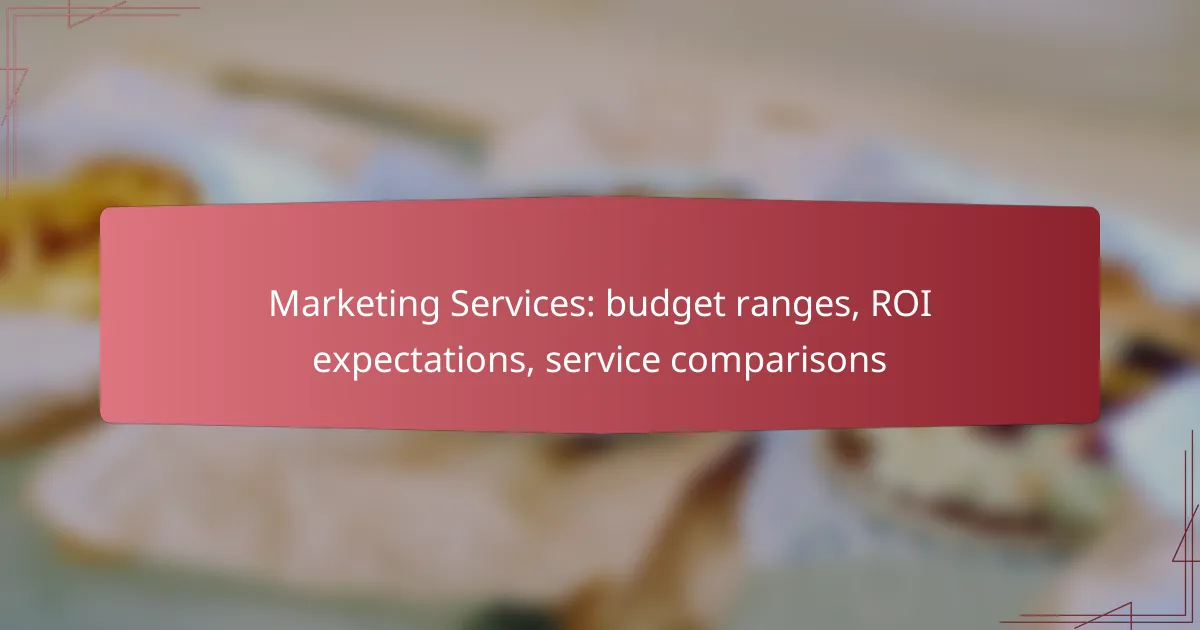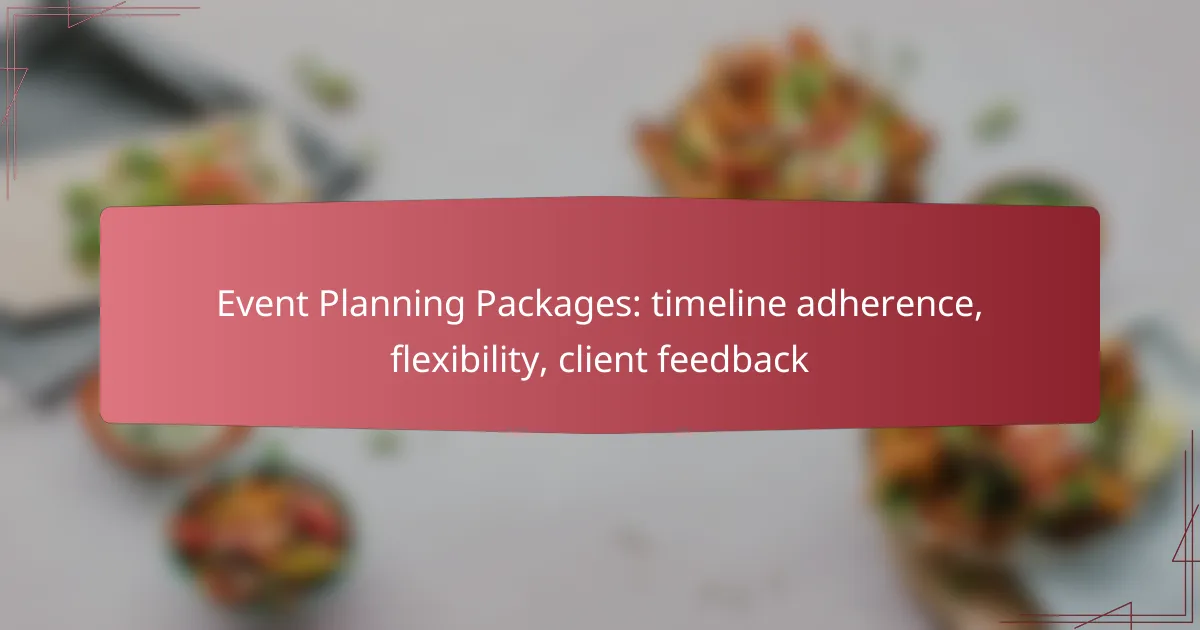When renting a venue, prioritizing guest comfort is essential for creating an inviting atmosphere that enhances the overall experience. This includes thoughtful seating arrangements, effective climate control, and sound management. Additionally, optimizing layout efficiency can improve operational flow, while ensuring accessibility for individuals with disabilities is crucial for accommodating all attendees. By focusing on these key elements, venues can provide a welcoming and functional environment for every event.
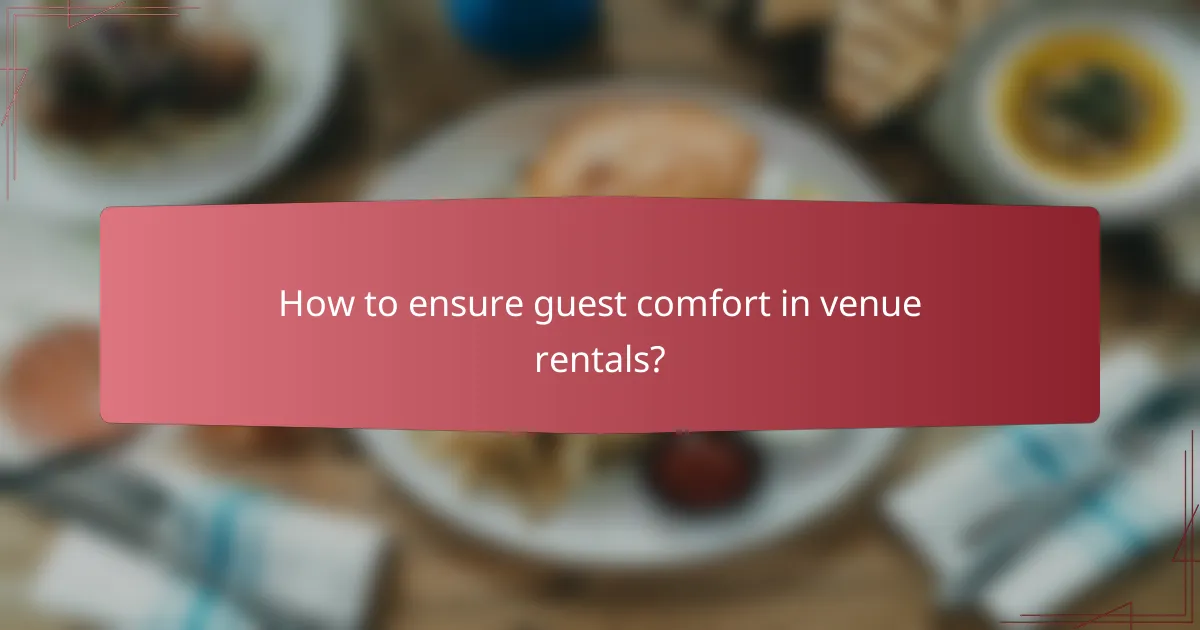
How to ensure guest comfort in venue rentals?
Ensuring guest comfort in venue rentals involves creating an inviting atmosphere with suitable seating, climate control, sound management, and accessible facilities. Prioritizing these elements can significantly enhance the overall experience for attendees.
Comfortable seating arrangements
Comfortable seating is crucial for guest satisfaction. Choose chairs that provide adequate support and space, allowing guests to sit comfortably for extended periods. Consider various seating layouts, such as theater, classroom, or round tables, depending on the event type.
Incorporating flexible seating options can also cater to different preferences. For instance, using a mix of chairs and lounge seating can create a relaxed environment while accommodating various group sizes.
Climate control systems
A reliable climate control system is essential for maintaining a pleasant indoor environment. Ensure the venue has heating, ventilation, and air conditioning (HVAC) systems that can efficiently regulate temperature and humidity levels. Aim for a comfortable range of 20-22°C (68-72°F) for most events.
Regular maintenance of these systems is vital to avoid breakdowns during events. Consider using portable fans or heaters as backup options, especially in venues with large spaces or varying occupancy levels.
Acoustic considerations
Good acoustics enhance communication and overall enjoyment at events. Assess the venue’s sound quality by checking for echoes or background noise that could disrupt presentations or conversations. Use sound-absorbing materials like carpets, curtains, or acoustic panels to improve sound quality.
For larger venues, consider investing in a sound system that can adequately cover the space. Test the audio equipment before the event to ensure clarity and volume are appropriate for the audience size.
Restroom accessibility
Accessible restrooms are a key aspect of guest comfort. Ensure that the venue complies with local regulations regarding accessibility, providing facilities that accommodate individuals with disabilities. This includes features like grab bars, wider stalls, and accessible sinks.
Additionally, consider the location and number of restrooms in relation to the event space. Placing restrooms within a short walking distance can minimize inconvenience for guests, especially during busy events.
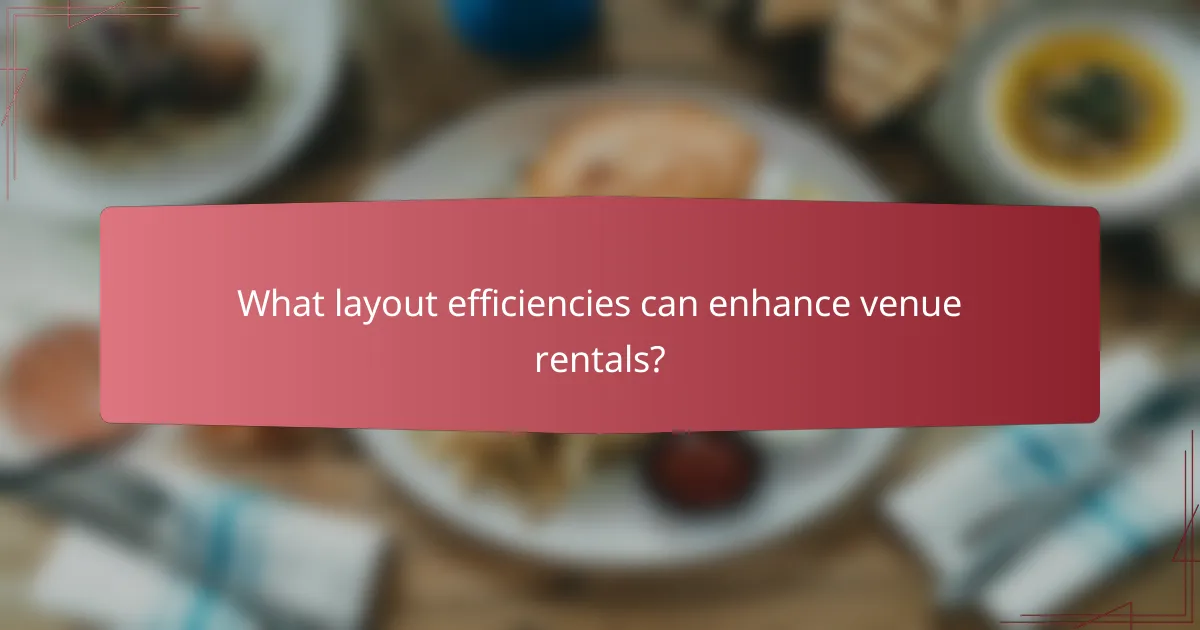
What layout efficiencies can enhance venue rentals?
Layout efficiencies in venue rentals focus on optimizing space usage to improve guest comfort and operational flow. Effective layouts can significantly enhance the experience for attendees while maximizing the utility of the venue.
Flexible space configurations
Flexible space configurations allow venues to adapt to various event types, from conferences to weddings. Utilizing movable partitions or modular furniture can create different setups, accommodating small gatherings or larger crowds as needed.
Consider options like collapsible tables and stackable chairs that can be easily rearranged. This adaptability can help venues cater to diverse client needs, making them more appealing to potential renters.
Optimal traffic flow design
Optimal traffic flow design ensures that guests can move freely throughout the venue without congestion. Planning pathways that minimize bottlenecks is crucial, especially during peak times like registration or breaks.
Incorporate wide aisles and strategically placed entrances and exits. For example, having separate entry and exit points can streamline movement and enhance safety, particularly in larger venues.
Multi-purpose areas
Multi-purpose areas maximize the functionality of a venue by allowing spaces to serve various purposes throughout an event. For instance, a room can be used for both dining and presentations by rearranging furniture and equipment.
Design these areas with versatility in mind, such as using retractable screens or adjustable lighting. This flexibility can attract a wider range of events, increasing rental opportunities and revenue for the venue.
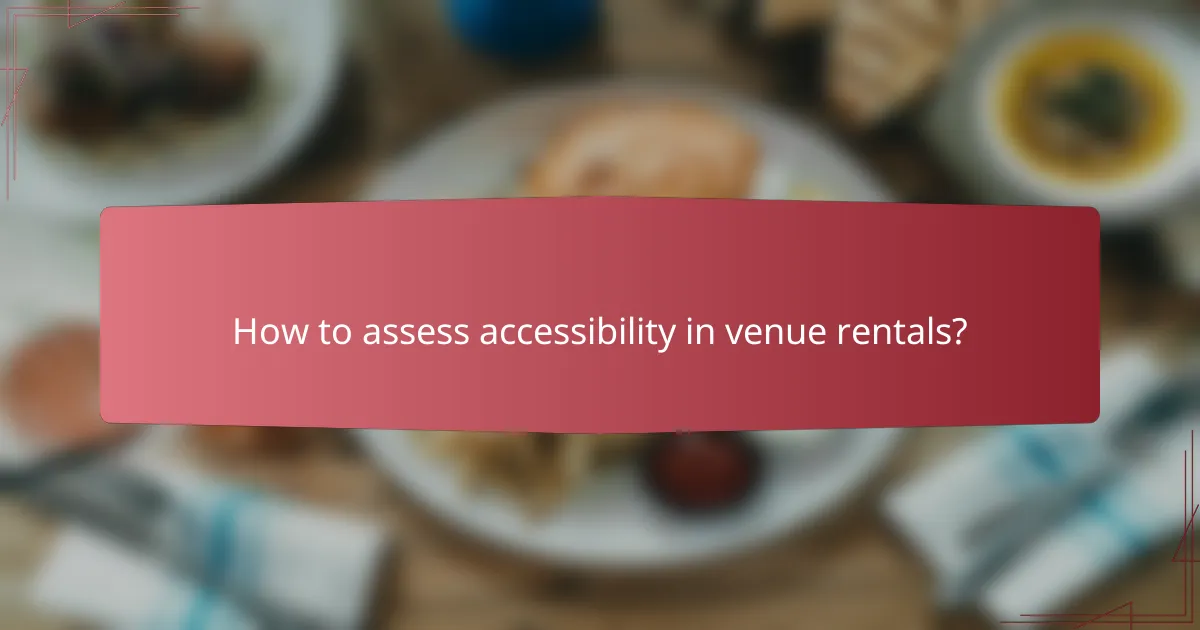
How to assess accessibility in venue rentals?
Assessing accessibility in venue rentals involves evaluating how well a space accommodates individuals with disabilities. Key factors include compliance with regulations, ease of access to parking, and the convenience of entrances and exits.
ADA compliance standards
ADA compliance standards are essential for ensuring that venues are accessible to individuals with disabilities. These standards cover various aspects, including wheelchair ramps, accessible restrooms, and appropriate signage. When evaluating a venue, check if it meets the minimum requirements set by the Americans with Disabilities Act (ADA).
For example, doorways should be at least 32 inches wide, and pathways should be clear of obstacles. It’s beneficial to ask venue managers for documentation of their compliance status to ensure they adhere to these standards.
Parking accessibility
Parking accessibility is crucial for guest comfort and convenience. Look for venues that offer designated accessible parking spaces close to the entrance. These spaces should be wider than standard spots to accommodate wheelchair users and should be clearly marked.
Additionally, consider the overall parking layout. A venue with a large parking area may require shuttle services for guests with mobility challenges, so inquire about available options if the venue is spacious.
Entrance and exit ease
Entrance and exit ease directly impacts the overall accessibility of a venue. Ensure that entrances are equipped with ramps or automatic doors for easy access. The threshold should be low to prevent tripping hazards, and there should be clear pathways leading to the main areas of the venue.
Evaluate the exit routes as well; they should be clearly marked and free of obstructions. In case of emergencies, accessible exits are vital for ensuring the safety of all guests, so confirm that the venue has proper emergency plans in place that consider accessibility needs.

What are the best practices for venue layout?
Effective venue layout prioritizes guest comfort, efficient use of space, and accessibility. By considering seating arrangements, stage placement, and technology integration, event planners can create an inviting atmosphere that enhances the overall experience.
Seating arrangement strategies
Choosing the right seating arrangement is crucial for maximizing comfort and interaction. Common strategies include theater-style for presentations, classroom-style for workshops, and banquet-style for dining events. Consider the event’s purpose and the number of attendees when selecting an arrangement.
Ensure that seating allows for clear sightlines to the stage or presentation area. Aisles should be wide enough to facilitate movement, ideally at least 1 meter, to prevent congestion. Additionally, consider incorporating flexible seating options to accommodate different group sizes and dynamics.
Stage placement considerations
Stage placement significantly impacts visibility and engagement. Ideally, the stage should be positioned at the front of the room, elevated if possible, to enhance sightlines for all attendees. Ensure that the stage is accessible for speakers and performers, complying with local accessibility regulations.
Consider the audience’s interaction with the stage. For events that encourage participation, a more central stage may foster engagement. However, for formal presentations, a traditional front-facing stage is often more effective. Always test sightlines from various seating areas before finalizing the layout.
Technology integration
Integrating technology into the venue layout enhances the overall experience. Ensure that audio-visual equipment is strategically placed to provide clear sound and visuals throughout the space. High-quality microphones, projectors, and screens should be accessible and tested prior to the event.
Consider the venue’s power supply and internet connectivity. Providing charging stations and Wi-Fi access can significantly improve guest satisfaction. Additionally, using event management software can streamline check-in processes and enhance attendee engagement during the event.

How does location impact venue rental choices?
The location of a venue significantly influences rental decisions by affecting accessibility, guest comfort, and overall experience. Factors such as proximity to public transport, availability of local amenities, and neighborhood safety can enhance or detract from the appeal of a venue.
Proximity to public transport
Choosing a venue close to public transport is crucial for ensuring easy access for guests. Locations within a short walk from bus or train stations can reduce travel time and encourage higher attendance. Aim for venues that are within a 10-minute walk from major transit points.
Consider the frequency of public transport services as well. Venues near high-frequency routes can provide more convenience, especially for events that run late into the evening.
Local amenities availability
Local amenities, such as restaurants, hotels, and parking facilities, can enhance the overall experience for guests attending an event. Venues situated near dining options allow guests to enjoy meals before or after the event, while nearby hotels can accommodate out-of-town visitors.
Evaluate the availability of parking as well. Venues with ample parking or nearby parking facilities can alleviate stress for guests who prefer to drive. A venue with a mix of amenities can cater to diverse guest needs, making it a more attractive option.
Neighborhood safety
The safety of the neighborhood surrounding a venue is a critical factor for many event planners. A venue located in a safe area can provide peace of mind for guests, encouraging higher attendance and participation. Research local crime rates and seek venues in well-lit, populated areas.
Additionally, consider the presence of security measures such as surveillance cameras or security personnel. Venues that prioritize safety can enhance guest comfort and satisfaction, making them more desirable for rental.

What are the costs associated with venue rentals?
Costs for venue rentals can vary widely based on location, size, and amenities. Key expenses typically include rental fees, deposits, and additional services such as catering or AV equipment.
Rental fees breakdown
Rental fees are the primary cost associated with securing a venue. These fees can range from a few hundred to several thousand dollars depending on the venue’s capacity, location, and prestige. It’s essential to understand what is included in the rental fee, such as tables, chairs, and basic AV equipment.
Many venues also require a deposit, which can be a percentage of the total rental fee or a fixed amount. This deposit secures your booking and is often non-refundable. Be sure to clarify the cancellation policy to avoid unexpected charges.
Additional costs may arise from services like catering, decoration, or security. It’s advisable to request a detailed quote that outlines all potential expenses to ensure you stay within budget. Comparing multiple venues can help identify the best value for your needs.
